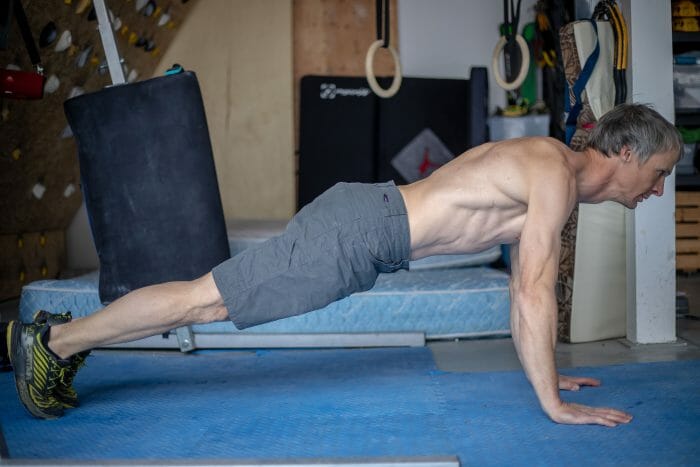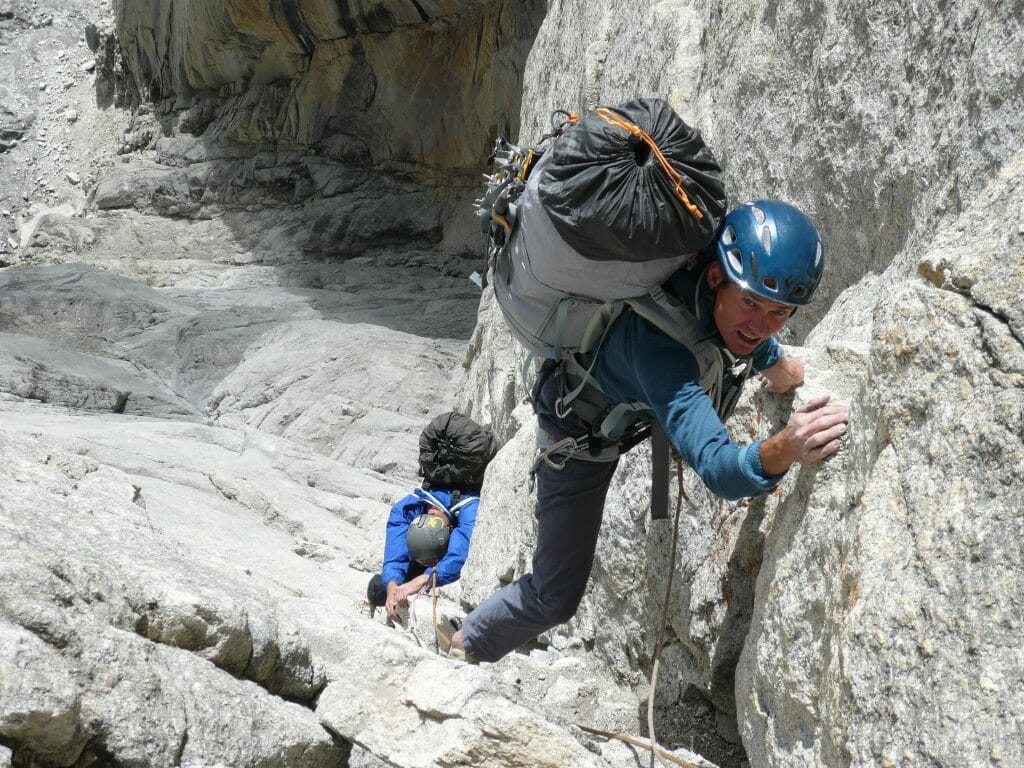dreamingWest
WKR
- Joined
- Jan 28, 2017
- Messages
- 1,202
A heavy pack for lunges or a staircase work well for me here in Texas. I also like holding unsymmetric kettlebells for step-ups/step-downs.
Follow along with the video below to see how to install our site as a web app on your home screen.
Note: This feature may not be available in some browsers.
I would recommend if doing a gym style ME session try to stick with single leg movements. focus on producing that consistent leg burn without jacking your HR. I’m a pretty strong guy and have found that a circuit of body weight lunges, step-ups, & jumping lunges done with the right amount of reps/sets/rest can totally destroy my legs for 60-72 hours after. Example would be 4-6 sets of 10 each leg of those 3 exercises with 30-45 seconds of rest should result in the desired effect. I’ve never needed to add more than 20 lbs to them either. The reason to try limit the cardiovascular stress -like getting into Z4- is because the global fatigue cost is too high and doesn’t allow you to so more quality endurance work due to how long a session that hard takes to recover from. The minimal effective dose to produce those results is what your shooting for.Would you guys consider 1000 body weight squats (butt to heels) or a mile of walking lunges muscular endurance or cardio? If one is hitting and holding zone 4 heart rates, would you take that as a sign more weight needs to be added? If breathing is controlled and one can breath through heir nose and talk, would you ignore the hart rate?
One thing I remember from reading Uphill Athlete was that your lungs and heart should not be the limiting factor for lower body strength endurance. The limiting factor should be your legs. I'd suggest adding more weight.
A mile of lunges or the BW squats could be ME work so long as you do keep your HR in Z2 or with nasal breathing. If you are working in Zone 4, then I would say you are not doing ME work. You are working in more of a threshold zone, so two different energy systems.
Another reason single leg exercises is better with ME -besides it being more sport specific to hiking- is you mostly eliminate the muscle lengthening that happens at the top and bottom of a squat. You want to keep tension on the muscle being used for the set duration. Taking a 30-45” between sets is mostly good to just keep the HR in check and lets you do more work and produce a greater work capacity as well and transfer over to more endurance. A dedicated lower body ME session should take at least 45 minutes after your warm upSo, if doing 50 weighted squats with 120 pounds gets one to a zone 4 heart rate, is the answer just slow down? Perhaps add a 3 second pause between squats? Kind of like with running, even if you can hold zone 4 for an hour plus, you just shouldn't do it most of the time?
So, if doing 50 weighted squats with 120 pounds gets one to a zone 4 heart rate, is the answer just slow down? Perhaps add a 3 second pause between squats? Kind of like with running, even if you can hold zone 4 for an hour plus, you just shouldn't do it most of the time?
I'm currently on week 4 of Evoke's gym based muscular endurance workout listed on their site and have enjoyed it so far. Very similar to this. Lots of single leg work and heavy legs - especially on the cool down run.This is a great gym-based ME workout that's based on jumping lunges and squat jumps. A good block of these, followed by a good block of weighted uphill hikes, is a great way to prep and then peak.

FREE At Home Muscular Endurance Workout with Progression
Build uphill endurance with this gym-based ME workout for runners, skiers, and mountaineers. muscular endurance workout.www.uphillathlete.com
I found that doing ME workouts in the way they described, ignoring my HR, shifted from an ME workout to a high HR conditioning workout, limiting the effectiveness of developing ME. Using my HR strap and staying in my upper Z2 and lower Z3 allows me to focus on fatiguing my legs. Everyone is different, so find what works for you.I think this really answers my question. Pulled from the Evoke link.
"The load you carry must be heavy enough that the local fatigue in your legs is the limitation, NOT your breathing. Disregard heart rate in these ME workouts. If your legs are not feeling a low-level burn for the full climb, you’re not getting maximum benefit."
So, as long as my legs are the limiting factor to my pace, it is correct per that and the focus on HR zones is wrong. For me the burn disappears after a few minutes, but despite not feeling a burn my muscles let me know pushing harder will result in weakness and failure rapidly, so I don't think a burn is universal.
There is also this:
"You MUST maintain the Z1-2 aerobic volume and add this training on top of that."
And this "The excitement of seeing rapid gains when using these ME workouts often leads many folks to overemphasize them in their training program by replacing time spent training at easier aerobic paces (Recovery and Zones 1 and 2) with these “money” workouts."
Both strongly imply that ME is not aerobic base training and should not focus on zones 1 and 2. ME should be treated like sprints and be a small percentage of total training time. At least based on what Scott writes.
So, take this with a grain of salt, or perhaps a whole shaker.I found that doing ME workouts in the way they described, ignoring my HR, shifted from an ME workout to a high HR conditioning workout, limiting the effectiveness of developing ME. Using my HR strap and staying in my upper Z2 and lower Z3 allows me to focus on fatiguing my legs. Everyone is different, so find what works for you.

I found that doing ME workouts in the way they described, ignoring my HR, shifted from an ME workout to a high HR conditioning workout, limiting the effectiveness of developing ME. Using my HR strap and staying in my upper Z2 and lower Z3 allows me to focus on fatiguing my legs. Everyone is different, so find what works for you.
My definition of MD is different than theirs, that's for sure. I believe in doing high-HR workouts, but high-HR workouts are not sustainable for long periods of time, whereas staying in a sustainable aerobic zone, one can go almost forever with proper fueling. What fails or diminishes is muscular endurance, and when I tried their method, it did not really benefit me, so I tried something else; as mentioned, everyone is different, and you have to test stuff to find what works best for you and your goals.This has been my experience as well. But I agree everyone is different and some experimentation is probably warranted.
My understanding reading through several of their articles was one of the reasoning on the Zone 2 ME recommendation was quicker recovery (vs doing the workout in Z 3 or Z 4).
Well, when you're standing straight up on a slope and can reach straight out and touch the slope, it's steep enough.In my experience a very small proportion of even avid mountain recreators have any idea what a 40° sustained slope angle actually is, much less 50.
My understanding reading through several of their articles was one of the reasoning on the Zone 2 ME recommendation was quicker recovery (vs doing the workout in Z 3 or Z 4).
Agree - and I've found it to be the case. In my experience, I can get a very good, very localized ME workout through the gym-based workout and still have the energy to go on an hourish run in the afternoon. You can also control all the variables to dial in the workout really well. (Variables being the number of reps, number of sets, rest between sets, etc.) If I do a pack workout, it tends to be overall longer and the general fatigue is much higher. Don't want to do a run in the evening.This
Traditional endurance training practice derives the ME training effect by doing high-intensity (Z3 and Z4) interval training. When exercising in these high-intensity zones for many minutes, the muscles’ FTa fibers are getting a similar training stimulus as they receive when we isolate them and induce local muscular fatigue. The difference is that traditional interval training carries with it a high global fatigue cost. Whereas the Local Muscular training stimulus carries only a local fatigue cost. So, recovery is quicker, and a higher volume of Z1-2 training can be maintained
For what it's worth - not that anyone cares - I did find that the gym-based ME workouts neglected my calves, so when I jumped into the pack or intervals my calves ended up fatiguing much more quickly than quads/hamstrings/hips. So I started jump-roping as a warmup, which really helped. It's also supposed to help strengthen the achilles tendon, so I see it as part of my newly-old-man routine to keep my achilles firmly attached to my heel - way too many people pop their achilles and that gives me the shivers...
